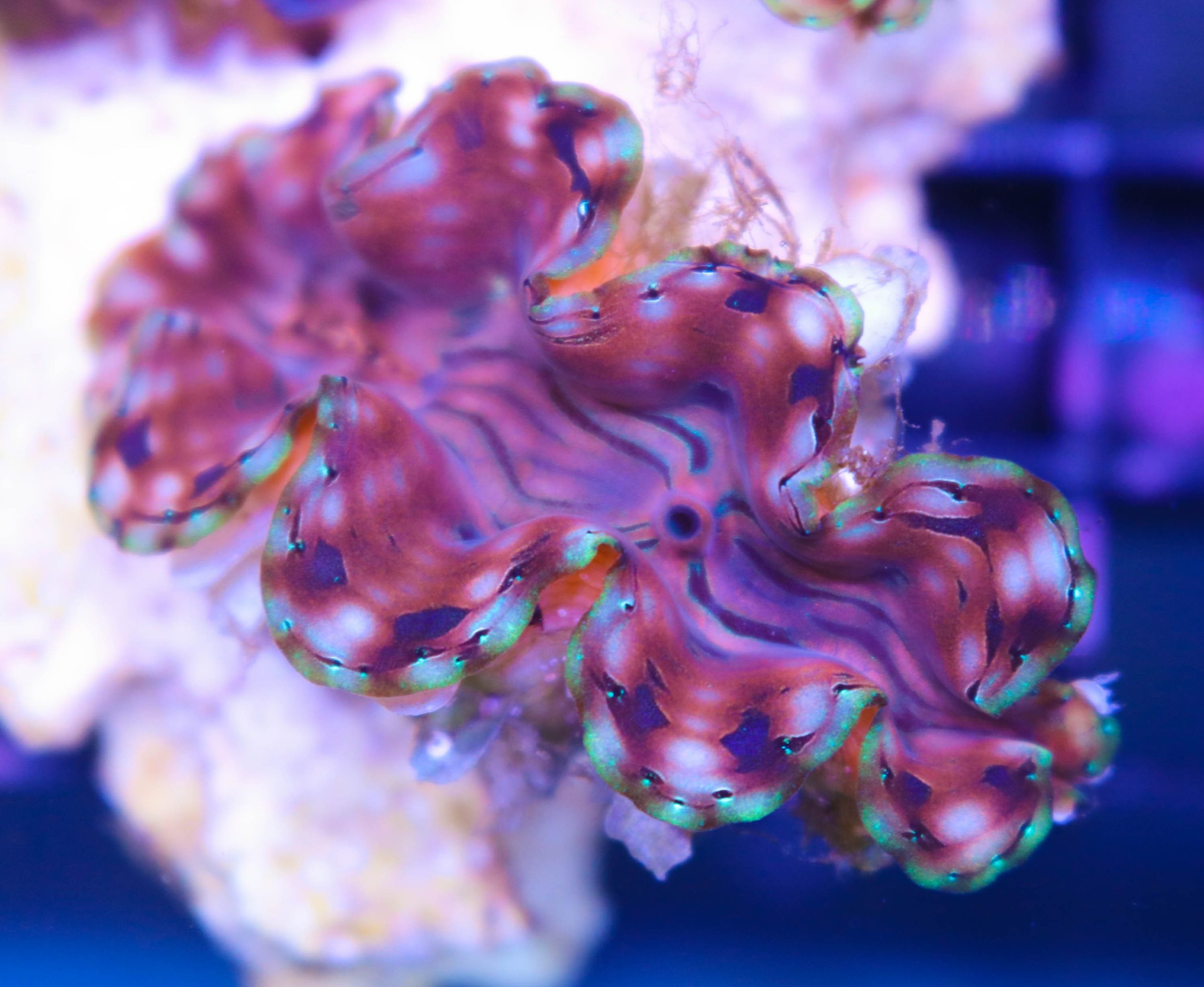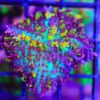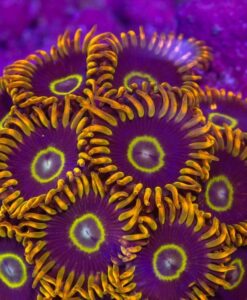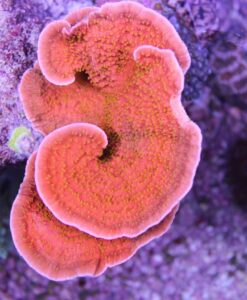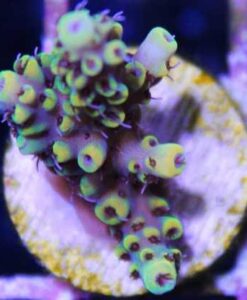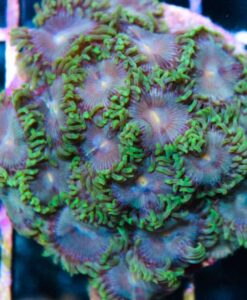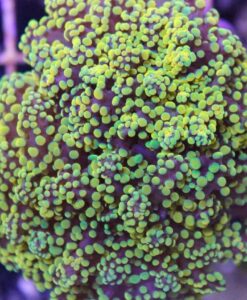Squamosa Clam
Squamosa Clam
(Tridacna squamosa)
Care: Moderate
Temperament: Peaceful. No sweepers or tentacles
Diet: Photosynthetic / Filter Feeder
Purchase Size: ( we fill this in)
Max Size: ( we fill this in)
Water Parameters: Salinity 1.024-.26, Temp 77-78, ph 7.7-8.2
Population: (we fill this in)
Reef Safe: yes
Lifespan: Up to 200 years in the wild
Breeding: Can be aquacultured but not generally by hobbyists
Gender: Yes but no defining physical differentiation. All clams are born male
Drip acclimate
Also known as the Scaled Clam, the Squamosa Clam gets its name from the Latin word for scale, squamosa. It
is found in a variety of colours including brown, cream, gold and tan. Due to the wide variety of available
colours and patterns hobbyists will sometimes seek out multiple varied specimens to create a vibrant
collection. There is also a blue morph that is sometimes available but, due to its rarity, that particular variety
can be quite expensive. It has large scales all over its shell and small organisms sometimes find shelter in its
scales.
The Squamosa Clam ranges over a wide territory and is found in the Central and South Pacific as well as the
Coral Sea and the Indo-Pacific region. However, all of the clams available in the hobby are aquacultured. In
the wild they are generally found living among dead or live corals, especially various acropora species. They
are found at depths of up to 50 feet. In a home aquarium they do best when attached to live rock. A clam
placed on a surface will generally attach itself within a few days. At that point its position should be
considered permanent, as attempts to forcibly move an attached clam will inevitably lead to damage to the
clam. They are one of the hardier clams available in the trade but still require a mature tank with stable water
parameters. They prefer a moderate amount of flow. They require less intense lighting than the Maxima
species of clam but, because they are photosynthetic, they still require moderately intense lighting to allow
their symbiotic zooxanthellae to produce energy from aquarium lighting.
The unique and varied colour patterns of the Squamosa Clam make it an interesting addition to a reef tank.
They receive most of their energy through photosynthesis but will also constantly filter water for plankton and
other organisms to supplement this. For this reason, they do best in established reef tanks with a healthy
population of microorganisms. They can also be spot fed with food designed for filter feeders.
If it is necessary to photo acclimatize a Squamosa Clam it can be placed on a plastic surface and slowly moved
higher in the tank over the course of a number of days. This way they can become accustomed to higher light
levels without becoming permanently attached. This process is generally recommended for specimens under
2”.

